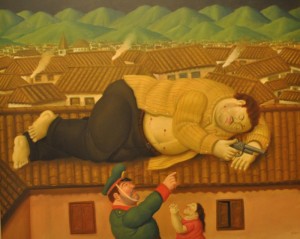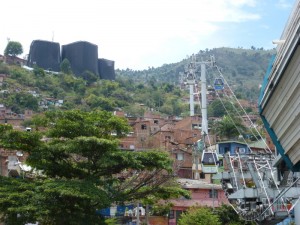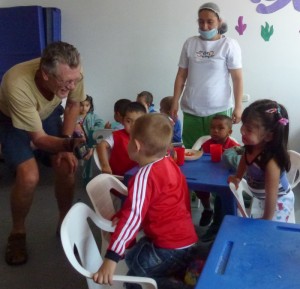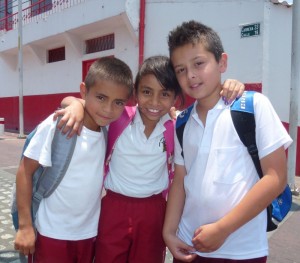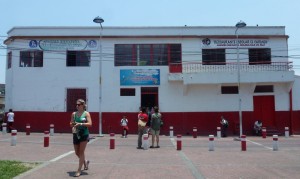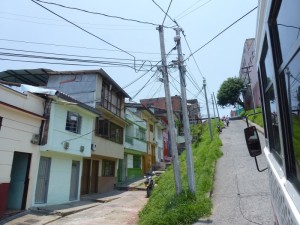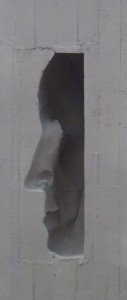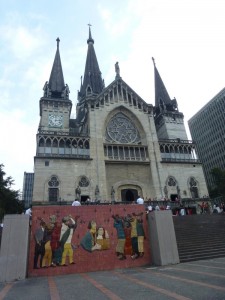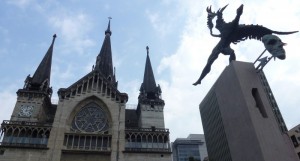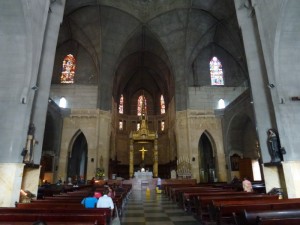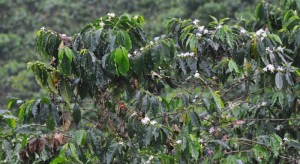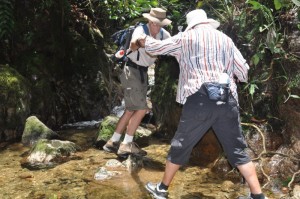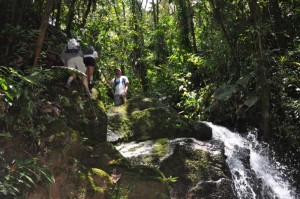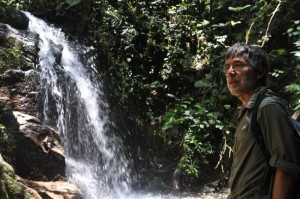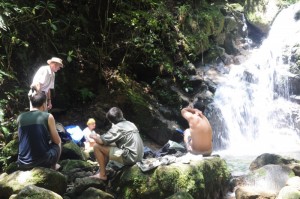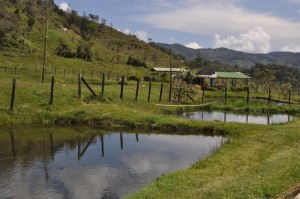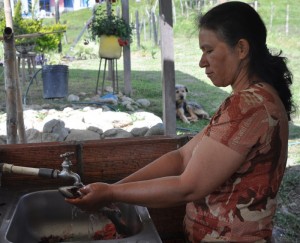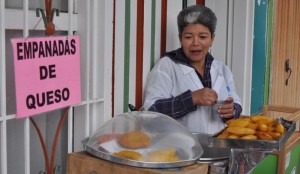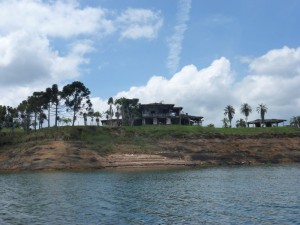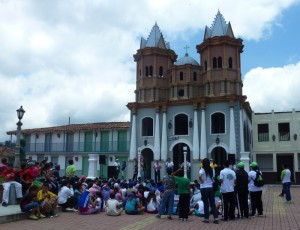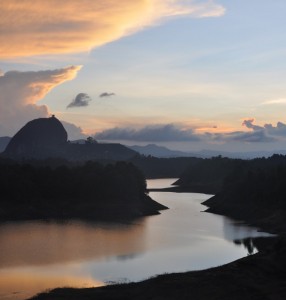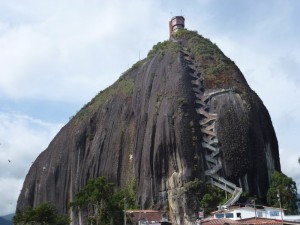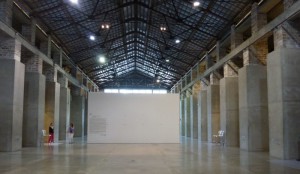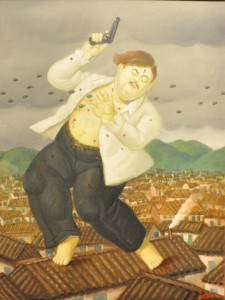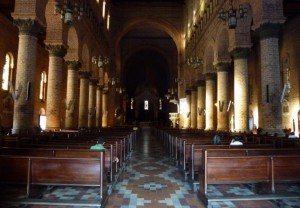April 1 – 7, Manizales, Guatapé & Medellín
April 1 Tuesday: Manizales
Manizales founded in 1849, has a population of about 400,000. Dragoman supports two projects run by a local charity called Sagrada Familia. Accompanied by a local guide, we visited a project in one of poorest neighbourhoods. The pre-school centre takes in 120 kids aging from three to six. An officer explained the work of the centre, common problems besetting the community which include domestic violence, problem and broken families, poverty, teenager pregnancy etc. These vulnerable children spend the whole day in the centre which feeds and gives them an education. It is hoped that proper care would help them break out of the poverty cycle. The charity receives donations from several major Colombian companies from the region and other sources. Its annual budget is about US$320,000.
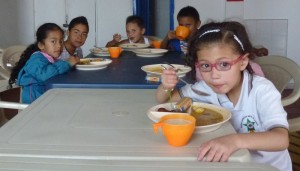 |
I am impressed by the centre which is simple but clean and tidy. The staff are friendly and enthusiastic. Though the neighbourhood is one of the poorest in Manizales, I find it comparatively orderly and tidy with many colourfully painted houses (as compared with the slumps in India and Africa). From the truck, I saw many teenager mothers with young children.
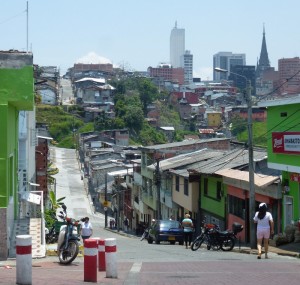 |
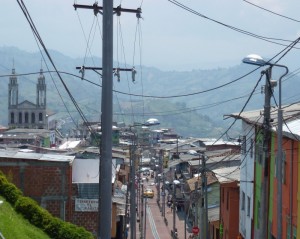 |
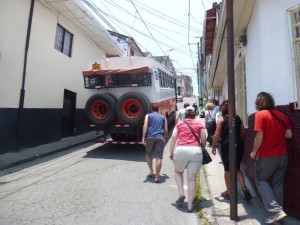 |
As Manizales is hilly with narrow and steep streets, the local government has built a cable-car linking up the city centre located on the ridge with the populous areas and the bus terminal in the valley. We took a cable-car ride with a glimpse of the city from above. After a quick lunch in a modern mall, we had a walking tour along the main street from 2:15pm to 4pm.
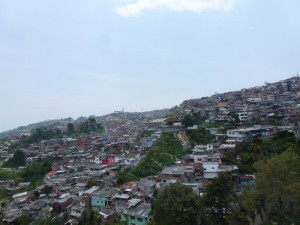 |
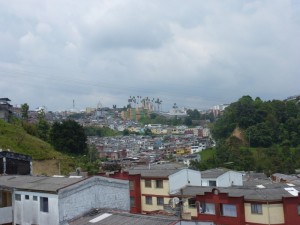 |
We saw a beautiful wooden church before arriving at Plaza de Bolívar, the heart of the city where one finds the Government building of Caldas and Catedral of Manizales in Gothic style. At the centre of the plaza stands a striking sculpture with a condor head and the body of a man overlooking at the Government building and an unusual profile of Simón Bolívar. Everyone was tired by the time we were taken to see the Monumento a Los Colonizadores at a hill top of Chipre neighbourhood. As it was a hazy day, we did not have a good panoramic view of the city and the surrounding mountains. What a pity!
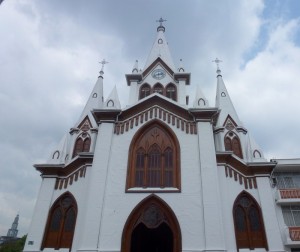 |
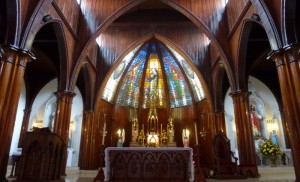 |
|
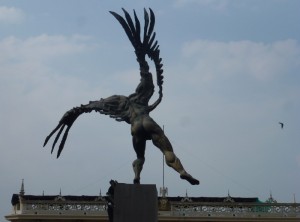 |
I was happy to be back in the hacienda around 5:15pm. My cook group was responsible for the dinner tonight. Gordon, Freddie and I were busy washing and chopping vegetables while Amy cooked the minced meat. Our lettuce wraps turned out to a success and we were delighted to see our truck mates had several helpings. Amy also prepared hot chocolate for dessert. Not a bad deal for COP$90000 feeding 18 persons!
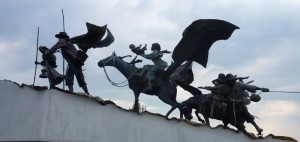 |
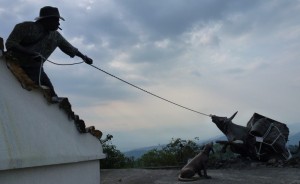 |
April 2 Wednesday: Manizales
My original plan was to make a side trip to Salento which is said to be one of the most beautiful towns in the area with many lovely treks. But a private taxi would cost COP$300000-350000 and I did not want to spend six hours taking two bus journeys in order to spend a night there. I would be better off spending a leisure day in the hacienda.
I am a tea-drinker as I cannot sleep after drinking too much coffee. But I love the aroma. I joined a 3-hour tour in the morning to see the coffee plantation. The whole coffee region is lush green with rolling hills and neatly arranged rows of coffee plants, some of which are planted on very steep slopes.
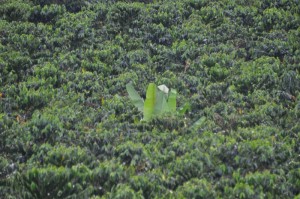 |
Our guide first talked about origin of coffee. First grown in Ethiopia, coffee spread abroad by Arab traders and was subsequently brought to the Caribbean and South America. The largest four producers are Brazil, Vietnam, Colombia and Indonesia (in that order). Colombia is the main country producing top quality coffee beans in the highland where cherries have to be picked by hand. Given its weather, soil and topography, Colombia coffee growers can harvest twice a year.
It was the first time I had a full guided tour in a coffee plantation. I saw how the beans was cleaned, dried and packed. Our guide also roasted some beans so that we could differentiate and appreciate the aroma and flavours of the beans. A plant usually lasts for six years and each plant can produce about 5kg of cherries with two harvests a year (thus giving about 600gram of coffee beans). Prices of coffee beans are set in London and at the current price, a bag of 70kg coffee beans may fetch about US$100.
After a light lunch, I spent the afternoon reading and writing. The book I picked from the truck is about a guy from South Africa who decided to quit his well-paid job to take an overland trip from Cape Town to Cairo by public transportation. It is boring and superficial without insight or self-reflection. I joined Andreas and Nam on a bird-watching walk after 4pm. Unfortunately we only saw a couple of birds on an hour-long walk.
The hacienda is comfortable but the Wi-Fi is slow and unreliable. I had completed my Galápagos trip two weeks ago but failed to upload the photos. I was determined to get on with the job and suffered a setback when my 2-hour labour was wasted following an abrupt interruption of the Wi-Fi. I gave up and went to bed early.
April 3 Thursday: Manizales – Guatapé (300km; 9 hrs)
Today was another long driving day. We set off before 9am and arrived at Hostel El Encuentro in Guatapé at 6pm. The road is fairly good but mountainous with heavy traffic at various sections. Hence it had taken two more hours than expected. The scenery is pretty and green with sugar cane fields and other cash crops. But I found it a bit boring and dozed off!
The hostel has a comfortable sitting room overlooking an artificial lake created during the construction of a dam for a hydro-electricity plant. The kitchen is well-equipped and the Wi-Fi works well. But my room which I shared with Marina is the worse one I had on the trip: it is small (3mx3m) without window and proper ventilation. It is smelly and damp. The bed sheet was damp too and I could not sleep. I was bitten by mosquitos and bugs and in the middle of the night I had to get up to find my own sleeping sheet-bag. It worked and I slept for a few hours.
April 4 Friday: Guatapé
Guatapé (1925m) is a pretty holiday town by an artificial lake and surrounded by mountains. Located about 80km from Medellín, the town is dominated by the white-washed Iglesia del Calma (1811) with a red dome and is well known for the fresco-like adornment of its traditional houses which are brightly painted with bas-reliefs depictions of people, animals, flowers, daily life etc.
I did not get up till 8:30am as my room had no sun light. Around 10am, I set off with Yvonne & Gordon, Nam and Andreas on a cascade walk with Greg, the American owner of the hostel. The 5-km guided walk cost COP$15000 per person. We had to cross the stream half a dozen times and climbed over several very slippery rocks and steep slopes. I had a walking pole and others gave me a hand when crossing the stream. The walk through the tropical forest is nice with an adventurous atmosphere. I was glad I had not fallen into the water.
On the way back, we passed by a trout farm. I caught a trout which weighed about 250gram. I paid COP$4000 and sought the permission of the café owner to have it steamed in her kitchen. I invited the owner to taste the fish which was most delicious! I had a short walk in the town before returning to the hostel.
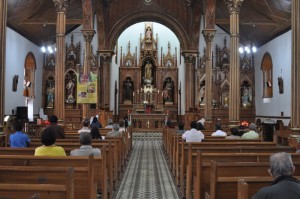 |
I spent the rest of the day in uploading photos on Galápagos. Tonight’s cook group prepared spaghetti for dinner. It was most delicious and I had two full plates. I am putting on weight!
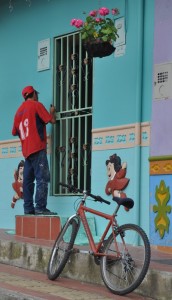 |
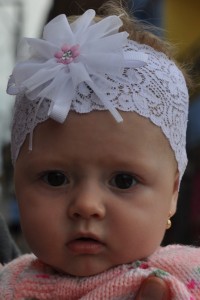 |
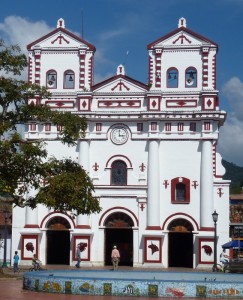 |
April 5 Saturday: Guatapé
We had another free day. It’s my cook group’s turn to prepare breakfast. I as at the kitchen at 7:30am. We served scrambled eggs and sausages an hour later. Accompanied by Lina from the hostel, eight of us went on a 2-hour boat ride on the lake. The boatman pointed out the abandoned house of Pablo Escobar (the cocaine king of the Medellín cartel) at La Manuela and a gigantic memorial cross marking the former site of the church which disappeared under water during the construction of the dam. We went ashore to see a replica of the old Peñol town which was relocated to higher ground. There were already several chiva buses with lots of kids there. We had a pleasant boat ride for COP$10000 each.
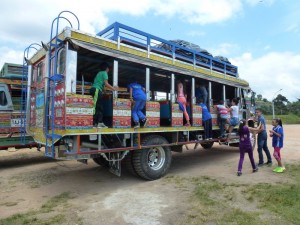 |
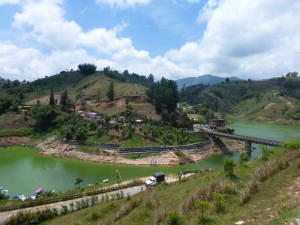 |
I did not return to the hostel for lunch. Instead, I took a local bus (COP$6000) to San Rafael, a typical small Antioquian village 20 km away. The road is well-paved with fantastic views of sprawling green valleys. I arrived at the village square dominated by a church before 1:30pm. It is atmospheric: many locals were piling into a chiva bus heading to nearby villages; many men with hat and a traditional bag over their shoulder were drinking beer at bars with their horse tied to a pole on the street and a few men were riding their horse strolling through the village. The men on their horses look macho like western cow-boys!
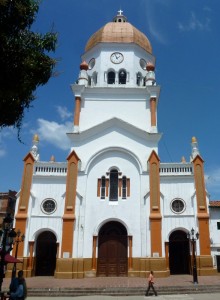 |
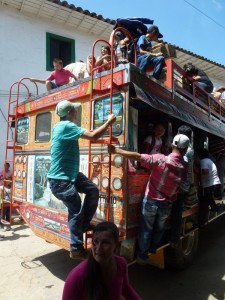 |
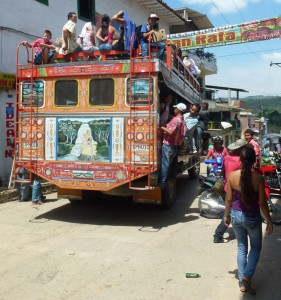 |
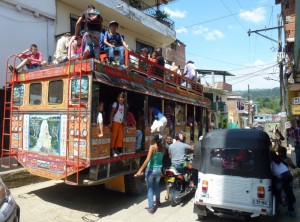 |
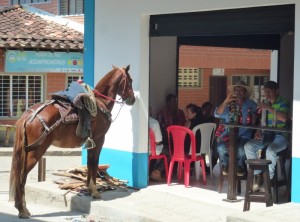 |
I intended to have a beer in a local bar and then take a swim in one of the swimming holes on my way back. But it was boiling hot and I decided to take the 2pm bus back to Guatapé. I had a beer by the park next to Iglesia del Calma and then strolled along the picturesque cobblestone streets before returning to the hostel after 4pm.
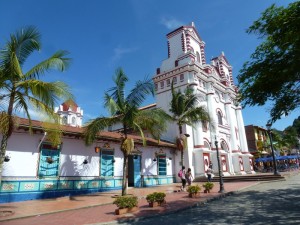 |
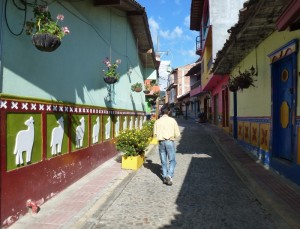 |
|
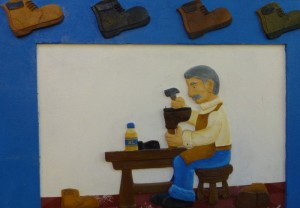 |
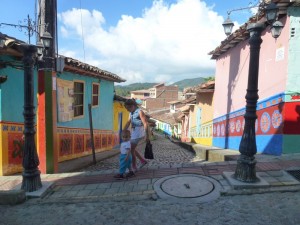 |
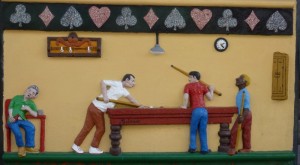 |
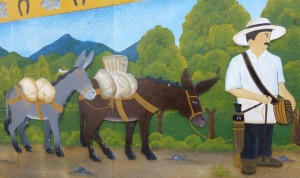 |
Tonight, we had excellent pan-fried trout prepared by Yvonne’s cook group. I miss Hong Kong’s excellent fresh seafood!
April 6 Sunday: Guatapé – Medellín (80km; 2 hrs)
We set off at 9am to climb la Piedra del Peñol, a 200m-high granite monolith rock by the lake. I took 15 minutes to go up 659 steps to the top where a lookout tower has been built adding another 81 steps (i.e. 740 steps in total). The panoramic views are fantastic!
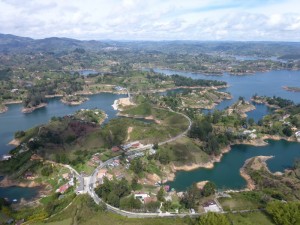 |
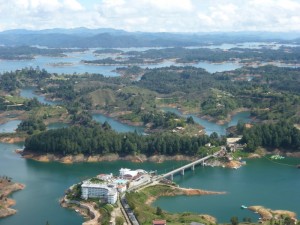 |
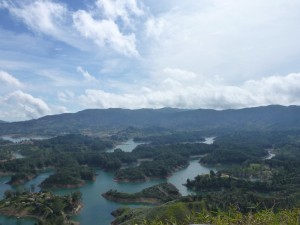 |
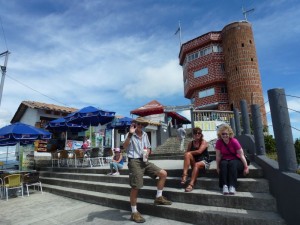 |
The journey to Medellín was smooth. By 1pm, we already settled in a nice and modern hostel called GE Hostel in the Poblado district which is known for its nightlife. I shared a dormitory with seven ladies.
Medellín has been world famous for two of its native sons namely Fernando Botero, probably the most famous contemporary artist from South America and Pablo Escobar, the cocaine king till his murder in 1993. The city was seen as the world’s most dangerous city in the 1990s but had a rebirth during the past two decades. It has been rated the most innovative city in 2012 and has just taken an award for urban design in 2013. It also boasts the country’s only metro system which connects some of its poorest neigbhourhoods with cable cars.Once I had put my stuff away, I headed to the Modern Art Museum which was highly recommended by the receptionist. Nam joined me and we took a taxi for COP$8000 and paid an entrance fee of COP$8000. But the permanent collection is small and the temporary exhibition with some odd installations relating to people, space in modern living is unimpressive. We strolled around the neighbourhood and found the street art on the walls more interesting. We walked all the way back to the hostel with a stop in Parque Poblado to watch a cultural show with traditional dances. Free entertainment for half an hour!
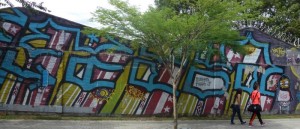 |
|
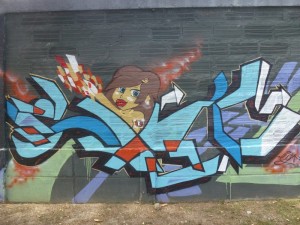 |
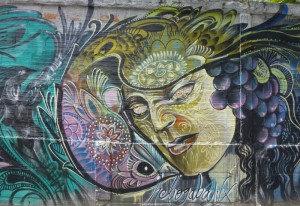 |
I was tired of truck and restaurant food and wanted something simple. Nam also had a stomach problem and planned to have veg soup. So we spent over half an hour looking for a place to get some fresh food. I brought egg-plant and onions and had a veg pasta. The girls went out for a drink and invited me to join. I just want to get on with my website and preferred to stay in the hostel. I do not mean to be rude or asocial and hope they are not offended.
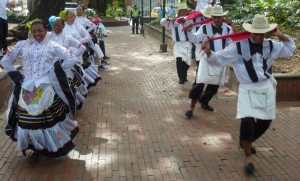 |
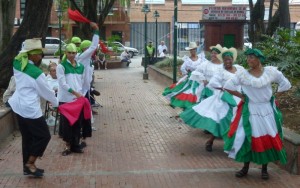 |
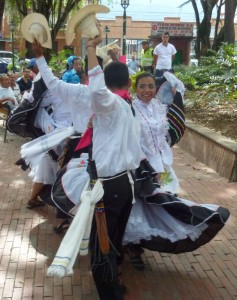 |
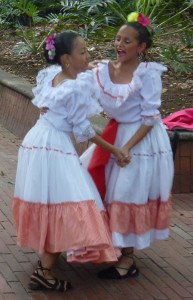 |
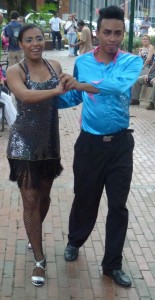 |
April 7 Monday: Medellín
It’s a free day and I spent the whole day sight-seeing. The metro system seems new and well designed and each ride costs COP$1900. The metro line from La Estrella to Niquia has two short metrocable car lines i.e. Line A from Acevedo to San Domingo and Line B from San Javier to La Aurora.
Andreas told me he would go to San Domingo for a panoramic view of the city. I asked whether I could join. We set off at 9am and got on the metro at the Poblabo station. It is a long ride and I spoke to a local sitting next to me. Carlos, a music teacher was on his way to Biblioteca España in San Domingo where he teaches 30 students aging from 7 to 14. I asked whether I could watch him teaching for a while. He welcomed the idea.
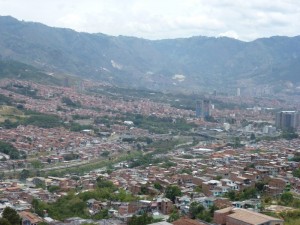 |
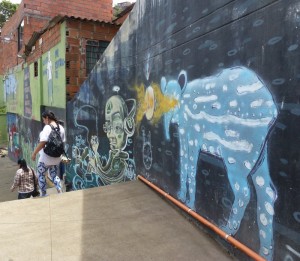 |
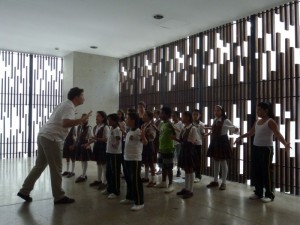 |
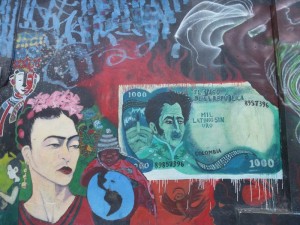 |
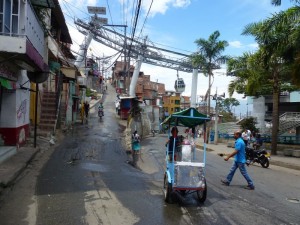 |
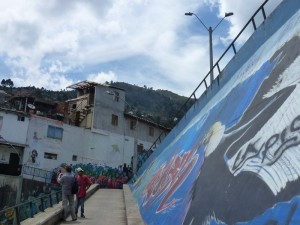 |
We had a tour of the building which is modern with interesting architecture. The metrocable line which completed some 10 years ago and the new Biblioteca España building have transformed this poor neighbourhood. I watched Carlos, a tenor with a beautiful voice, teaching the children to tap, sing and sway their body. He also teaches another class in the San Xavier neighbourhood which can be reached by Line B. I therefore decided to take a ride to see other parts of the city.
I had a 2-hour fun ride. We boarded the metrocable car at San Domingo, switched to the metro, got off at the San Antonio station, jumped into another metro line to San Javier before catching a cable car to La Aurora. We got off at each station to take a view from the platform before hopping back to the cable car. Then we returned and got off at the San Antonio station at 1:15pm.
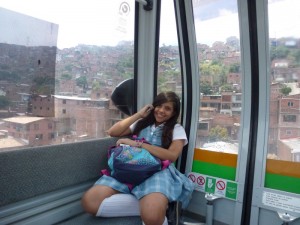 |
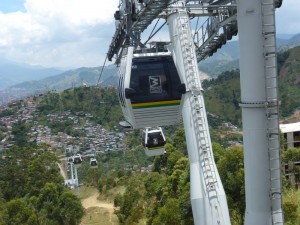 |
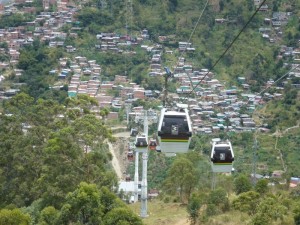 |
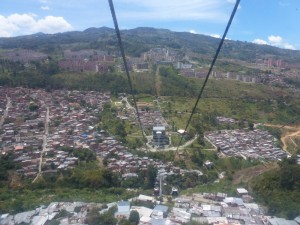 |
I had the best and cheapest sightseeing tour in South America (the only rival is Hong Kong’s harbor cruise on Star Ferry and a free ride on the escalator from the Central to Conduit Road). I had a glimpse of this fascinating city from above for only COP$3800. Undoubtedly, the neighbourhoods where Line B passes look tidier as reflected from the materials used for the roofs, width of the streets and quality of the housing.
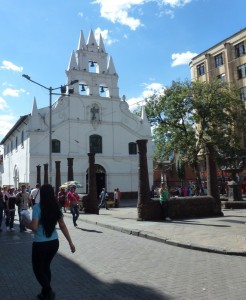 |
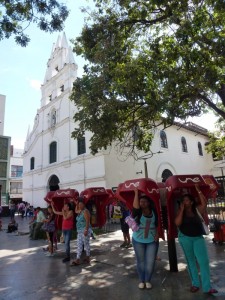 |
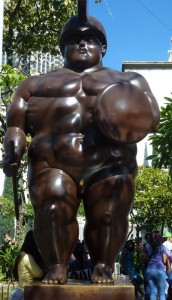 |
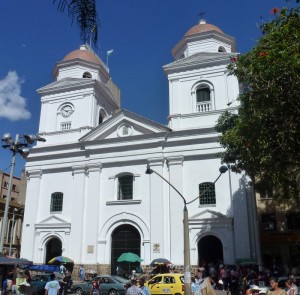 |
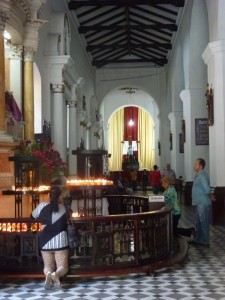 |
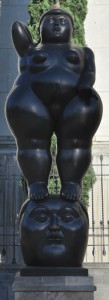 |
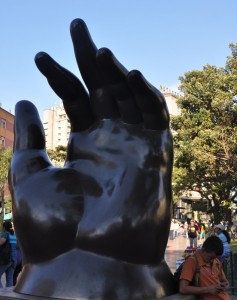 |
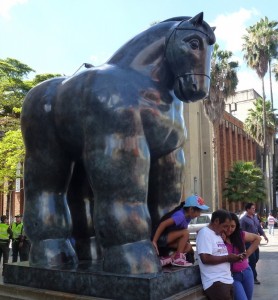 |
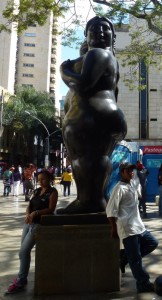 |
It was a very hot day. I spent the whole afternoon in the old city centre. After a long beer stop at Parque San Antonio where there are three sculptures by Botero, I and Andreas walked to Parque Berrió and visited Basilica de la Candelaria (1770s). Then we went on our own and I went to see Ermita de la Veracruz, a small church close to Museo de Antioquia which has received a generous donation from Botero (92 pieces of his work as well as a collection of paintings of well-known international artists). I spent two hours strolling in the museum and Plaza Botero where 23 sculptures by Botero are placed. Locals as well as tourists love to touch and take pictures with the figures whether it is a fat man, nude woman, cat or horse! Being fat and voluminous is beautiful and lovely!
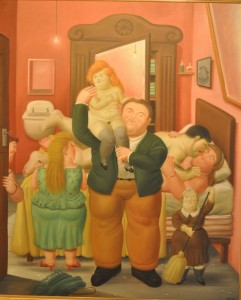 |
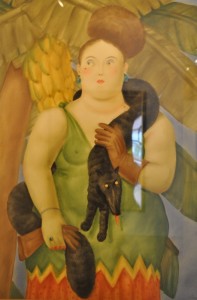 |
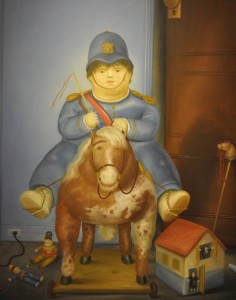 |
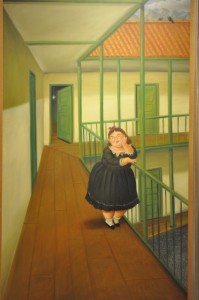 |
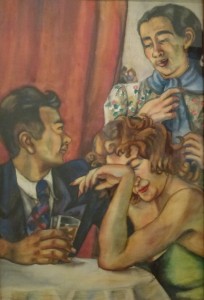 |
My final stop was Parquet de Bolívar and Catedral Metropolitana (completed in 1931), the largest Gothic church in Colombia. It was an unforgettable experience to take the metro at the peak hour. As the locals did not step aside to let passengers off first, I had to battle my way through.
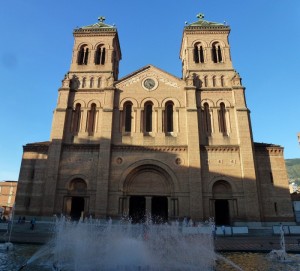 |


